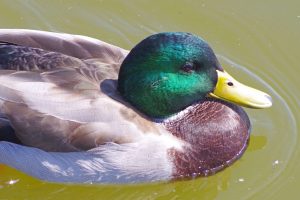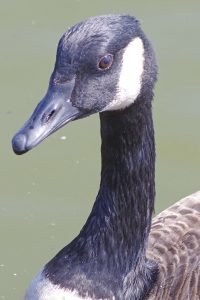It wasn’t the best training ground for waterfowling in one sense.
Field Hudnall grew up pursuing ducks and geese on the Ohio River near Louisville, Ky. It remains to this day, he’ll tell you, “one of the most consistent bad spots I’ve ever hunted.”
But he’s done OK since. Owner of Field Proven Calls and co-host of Ducks Unlimited TV, he learned enough in those tough circumstances to go on to hunt in 30 states and four Canadian provinces and win multiple calling championships along the way.
So in short, if he says there are four real keys to waterfowling, it pays to listen.
“These four rules, if you can master them, you can be successful waterfowl hunting every time you go out,” Hudnall said.
And what are they?
Location
This is the most important consideration, Hudnall said. But by location, he doesn’t mean a particular place in the country.

When it comes to waterfowling, mallards are the most commonly harvested duck in Pennsylvania.
Bob Frye/Everybody Adventures
Rather, he’s talking about being in the one spot the birds most want to be. That can vary day to day or even by time of day.
In Kentucky, for example, ducks and geese may fill a small impoundment overnight, feeding all the while. Come daybreak, though, they want to rest on the river, even if that’s only 50 yards away.
That’s the place to hunt, he said.
Likewise, in Kentucky’s horse country, a pasture may hold no appeal to geese one day. After a snow storm, though, he said, when the geese can’t tell what’s an empty field and what was recently full of crops, decoys in a pasture can really draw birds in.
“Whatever your situation is, you want to look at it and ask yourself, what’s the best situation on a daily basis,” Hudnall said.
Hiding
Find the location where the birds like to congregate is step one. Next to figure out is, will they still come into that spot if you’re there?
“You going to that spot is the new variable. Will those birds continue to go there with you being there?” Hudall asked.
“They will, but only if you hide properly.”
Your “hide” can depend on what you’re hunting, he said.
“A duck is a helicopter. A Canada goose is a 747 airplane. They need runways, they need room, especially on water,” Hudnall said.
“You want to think about how those gees are going to approach.”
They won’t fly directly into a river bank, for example. So in that situation, Hudnall might hide in such a way in relation to his decoys that the geese will come in on a crosswind as opposed to straight on.
“It’s not as easy a shot, true. But on a crosswind, they’re focusing on my decoys and not me,” he said.
Decoys
Speaking of decoys, it’s one thing to attract geese and ducks to the field or pond you’re hunting.
“But if you’re hunting a 100-acre field, you don’t want them to land just anywhere,” Hudnall said.
What’s going to make them set down within 5, 10, 15 yards of you?
“The decoys are,” Hudnall said.
The key is to set them out in such a way that incoming birds present themselves for a shot.
In a field, Hudnall puts his decoys bit away from the blind, rather than right in front of it. Similarly, on small ponds, he specifically puts the decoys farther rather than closer to him.
That’s because the birds don’t want to land in the middle of the decoys. They’re looking for open water, Hudnall
said.
Provide that landing zone closer to the blind than the decoys, he said.
“Think of it as putting your decoys where you don’t want the birds to go,” he said.
Calling
Calling is the favorite part of hunting for many, and that’s OK, Hudnall said. It’s certainly true for him.

When it comes to waterfowling, geese are as popular in Pennsylvania as anywhere in the Atlantic Flyway.
Bob Frye/Everybody Adventures
Some might also think calling is the most important part of waterfowling, though, he added. That’s not so OK.
“The call is a tool. That’s all it is. Some days it works great. Some days you might as well leave it in your bag in the truck,” he said.
Calls are meant to show enthusiasm and excitement. But that’s relative, he said. He suggested thinking of calls as the volume on a stereo.
“You’ve got zero to 10. You don’t want to give them a 10 right off the bat,” Hudnall said.
It’s better to start calling at a one, then go to a three if needed, then a five or whatever after that.
“The effective caller is not the caller who can blow 100 miles per hour. The effective caller is that hunter who has learned to watch the birds and learned to crank up the intensity as needed,” Hudnall said.
Can you master those four things, or at least get proficient at them? If so, expect good results, Hudnall said.
“I don’t care what or where you hunt across the country, they’re the four common denominators that are most important,” he said.
Waterfowling by the numbers
There will be more competition out there than you might think.
Duck hunting season is set to open in portions of Pennsylvania this weekend. Other opening days – the hunting is broken down by zone – follow in waves thereafter, so that the whole state will be open by month’s end.
Goose hunting gets rolling this month, too.
The number of hunters won’t approach what you’d expect for the start of some other small game species.
But, relatively speaking, it will be busy.
“Pennsylvania probably isn’t typically thought of as a big waterfowl state the way you might think of Maryland or Arkansas,” said Ian Gregg, chief of the Pennsylvania Game Commission’s game management division. “But we actually do have a pretty heavy use of the waterfowl resource.”
Between 2011 and 2015, for example, Pennsylvania was home to an average of 20,500 duck hunters per year.
That may not seem like a lot. But it actually ranks the state second among all those in the Atlantic Flyway.
North Carolina stood atop the list with an average of 31,400. Coming in after Pennsylvania were New York (19,300), South Carolina (18,800) and Georgia (17,700).
Pennsylvania led the Flyway over that time in terms of goose hunters, averaging 23,900 annually. Maryland was second (23,000), followed by New York (16,600), North Carolina (16,200) and Virginia (12,700).
A map of the duck and goose zones, with opening days listed, is available online.
The daily limit on geese varies by zone. For ducks, it’s six per day, though there are limits by species. Hunters can’t take more than four mallards, including two hen mallards, two scaup, two black ducks — that’s new — three wood ducks, two redheads, two canvasbacks, one pintail, one mottled duck, one fulvous whistling duck, four eiders, four long-tailed ducks or four scoters.









